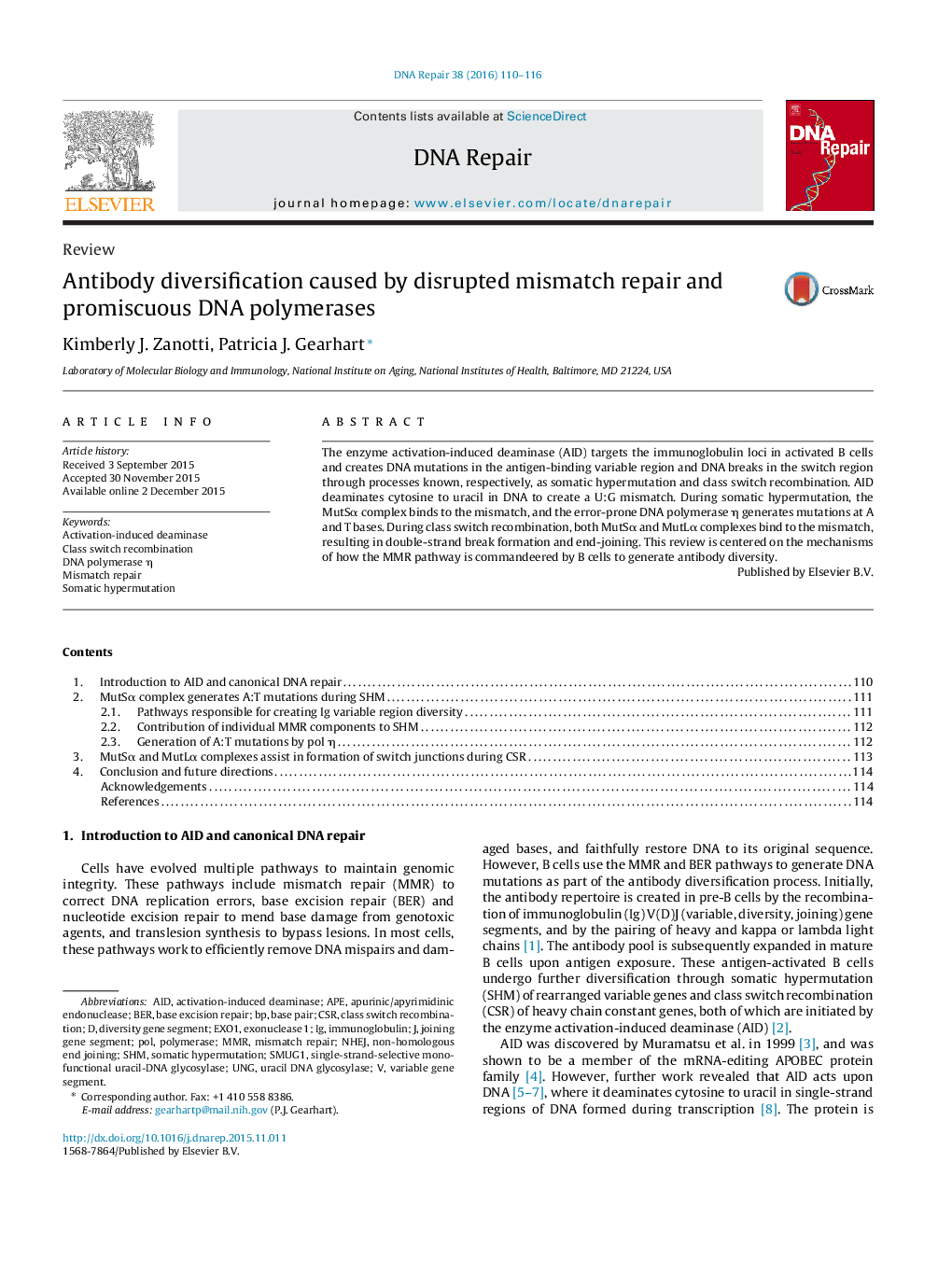| Article ID | Journal | Published Year | Pages | File Type |
|---|---|---|---|---|
| 8320542 | DNA Repair | 2016 | 7 Pages |
Abstract
The enzyme activation-induced deaminase (AID) targets the immunoglobulin loci in activated B cells and creates DNA mutations in the antigen-binding variable region and DNA breaks in the switch region through processes known, respectively, as somatic hypermutation and class switch recombination. AID deaminates cytosine to uracil in DNA to create a U:G mismatch. During somatic hypermutation, the MutSα complex binds to the mismatch, and the error-prone DNA polymerase η generates mutations at A and T bases. During class switch recombination, both MutSα and MutLα complexes bind to the mismatch, resulting in double-strand break formation and end-joining. This review is centered on the mechanisms of how the MMR pathway is commandeered by B cells to generate antibody diversity.
Keywords
CSRExonuclease 1EXO1UngMMRSMUG1BERSHMAPENHEJapurinic/apyrimidinic endonucleaseDNA polymerase ηUracil DNA glycosylasesomatic hypermutationimmunoglobulin class switch recombinationdiversity gene segmentvariable gene segmentmismatch repairbase excision repairbase pairnon-homologous end joiningActivation-induced deaminasepolPolymerasejoining gene segmentAID
Related Topics
Life Sciences
Biochemistry, Genetics and Molecular Biology
Biochemistry
Authors
Kimberly J. Zanotti, Patricia J. Gearhart,
